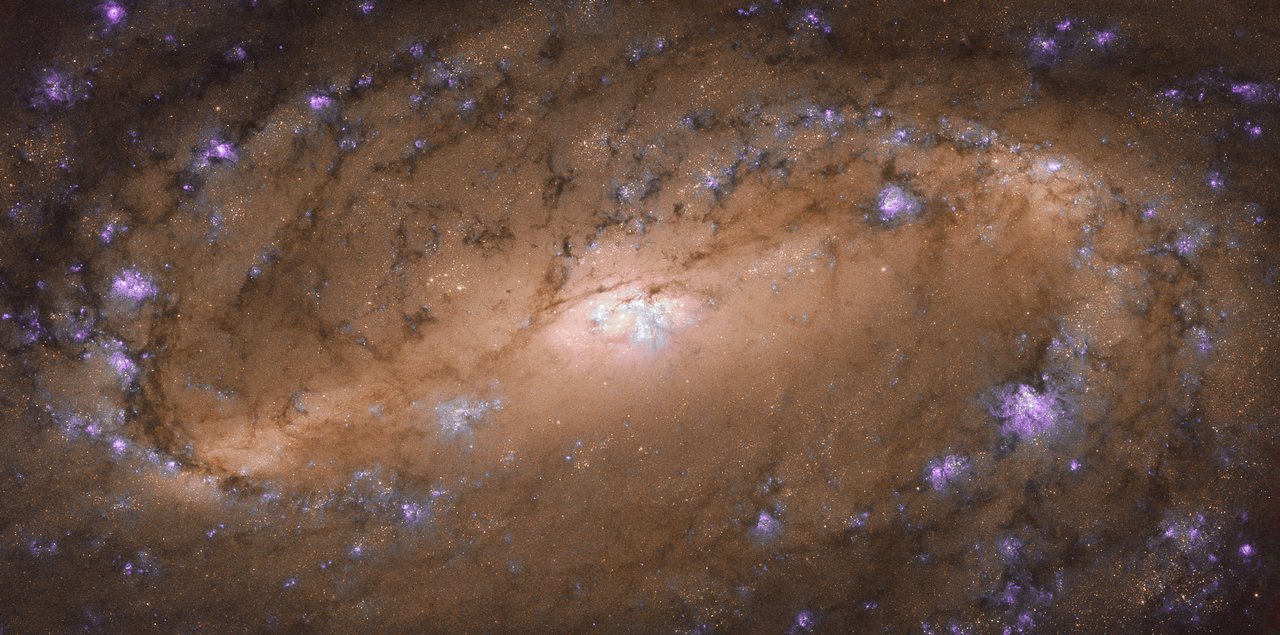
The Hubble Space Telescope has captured an ideal example of the archetypal spiral galaxy. The NGC 2903 galaxy is located in the constellation of Leo (The Lion) as is approximately 30 million light-years away. It is notable for its high rate of new star creation, which is particularly active in the center.
A spiral galaxy is the iconic shape that you likely imagine when you think of a galaxy. The Milky Way is a spiral galaxy, as are the nearby Andromeda and Triangulum Galaxies. They consist of a flat rotating disk, with a concentration of stars in the center of the disk forming an area called the bulge. Spiral galaxies have arms which reach out from their center, in which new stars are born, often making the arms glow as bright as the center of the spiral because of the hot young stars located inside them.
Spiral arms can have different properties too, either being the looser, more hazy type found in Sc or SBc galaxies, or the tight, closely wrapped arms found in Sa and SBa galaxies. As an SB type galaxy, NGC 2903 has looser arms which travel out further from its center.
The NGC 2903 galaxy, like our Milky Way, is a subtype of spiral galaxy called a bar spiral galaxy. The bar is a elongated section in the middle of the galaxy which forms a kind of central structure, affecting both the movement of stars and gases within the galaxy and the movement of the spiral arms. Between one third and two thirds of all spiral galaxies have bars, and it is believed that these areas act as additional stellar nurseries in which stars are born. In the image above you can see the elongated bar of bright white light right in the middle of the galaxy.
The image was captured as part of a Hubble survey which observed the central regions of 145 nearby disk galaxies. Astronomers were looking at the heart of galaxies to learn more about the black holes that lurk there, and how the stars, gas, and dust close by interact with them. Two monochromatic images were captured using two spectral filters, and the differences in brightness between the images were used to calculate the different hues in the final image.



